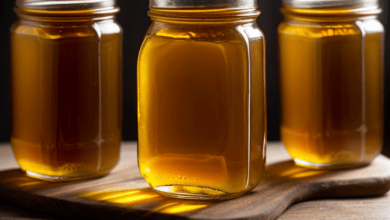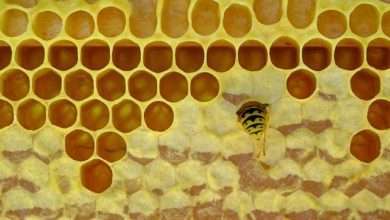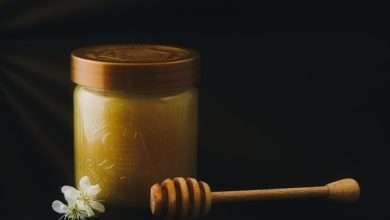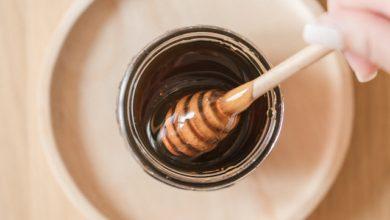How to Bottle Honey

Oh, that first honey crop, oh heck, even the seventh crop is a period of immense enthusiasm in a beekeeper’s life. It is your time now that the bees have finished their work. The trip your crop makes from the hive to the jar is what matters most when processing or bottling honey.
A true labor of love is making honey from your own bees in jars. Of course, there are some crucial measures to take in order to safeguard your crop. The task is considerably simpler if you have everything prepared.
One of the first “major triumphs” for a rookie beekeeper is a successful harvest. And the honey in your own bottle will always taste the best.
In the second year of beekeeping, many beekeepers experience their first crop. A new colony has a lot of work to accomplish during the first season in order to get ready for Winter. Producing takes place in year two.
Whether you intend to keep some of the harvests for yourself or sell some of it. Knowledge of the product you are selling is crucial. You shouldn’t label your product incorrectly; it enrages customers.
How Much Honey Will A Beehive Produce?
A colony will typically generate 35 – 50 pounds of extra honey, on average, in several climates.
Every hive produces a different amount depending on the region, which varies tremendously. Maybe 150 pounds or more worth of surplus will be produced by your colonies. Regardless of where you reside, just take what the bees do not need.
You will have years when your hives aren’t prolific, no matter how skilled you are. A year with no crop is something that every beekeeper can encounter. Additionally, not every hive will yield honey every year.
The weather is another important factor to take into account in production, in addition to bees. High winds, too little or too much rain, and late freezes all have an impact on the nectar supply.
You won’t have to worry about honey processing for some years, which is a terrible reality. It does not always produce a lot of crops.

Keeping Your Honey Raw
How much processing is done will partly rely on how big your beekeeping enterprise is. Although the phrase “processing” is generic, it frequently conjures images of the biggest packers.
Very large commercial organizations are required to go through a more stringent heating or filtering process. In this way, their product jars will maintain their aesthetic appeal on the shelf for many months without crystallizing.
If you are a small-scale beekeeper, you can operate a little differently and maintain your product’s rawer nature. Ultrafiltration and heating are not required. To get rid of big bits of wax, let gravity drop through a strainer.
Harvesting Your Honey Crop
The bee yard offers a variety of methods for collecting honey supers. Make sure the honey is ripe by taking care to do so (moisture content, etc.) A honey refractometer is ideal for this.
The use of smoke to move bees from the boxes is not advised by a competent beekeeper. Bees become irritated, and your crop may become damaged if you use smoke during harvest.
Honey House
The processing and packaging of honey take place in a specific facility called a “honey house.” Do all individuals require one? Naturally, the answer is no, but you still need a spotless area where bees cannot enter.
The bees will take the supers back if you do not move them to a safe place inside the hive after you remove them.
Most beekeepers have a dedicated space in a nearby structure that is not used for other family activities where they prepare their hives. It is best to use a modest, portable wooden structure.
Use of your kitchen or garage is an option if you do not intend to sell any goods. It is possible for contamination from other foods while preparing and bottling food products at home. It’s also a mess, my goodness.
Please be aware that in some places, it is unlawful to process honey for sale in a private residence. Check out the local processing laws and regulations.
Ask for assistance if you need to bottle a sizable harvest. Invite your neighbors or friends over so they may come to learn more about how things are made. It might make it clearer to them why you might not wish to distribute anything without charge.
Check Local Honey Packing Regulations
Let us clear up the legal issues before we continue with the process of packaging or bottling honey. You will be subject to more stringent rules if you’re selling goods.
In spite of the fact that you may only be selling a limited quantity to a local market. Before using this route, check your state and local legislation. The bottling of honey that is meant for retail sale is governed by different rules in each state.
Do you worry about the location and method your beekeeper uses to bottle honey? You need to give this a lot of thought.
Food products include honey. When anything is being bottled to be consumed, you must pay attention to how clean the facility is.
The Extraction Process.
9–10 frames are typically found in boxes (supers). As soon as the boxes are securely inside, you can use an electric heated uncapping knife or uncapping roller to remove the wax capping from each comb cell.
Please note: Electric uncapping knives get extremely hot, so you may consider purchasing one with a manual temperature control.
These wax caps are cleaned and melted later. From the cleaned beeswax cappings, a variety of exquisite wax products can be made.
A device known as a honey extractor is used to house frames after they have been uncapped. The liquid will be forced from the comb by the extractor’s spinning action. For further information, see my suggestions on how to extract honey.
Beekeepers who just have one or two hives can utilize a small extractor or split one amongst themselves. Fresh honey will pour out of the gate and fall into the bucket below after passing through a coarse strainer. Any substantial wax fragments are removed by the strainer. Each super box goes through the same procedure.
Processing Without an Extractor
Some beekeepers either do not have extractors or decide not to utilize them. This is all right. Cut the comb from the wooden frames with a knife and place it in a big pan. The comb is then broken up.
By cracking open the wax cells, the liquid can then drop through a piece of cheesecloth or other straining material.
Many local bee clubs will have a honey extractor that may be borrowed.
This is a correct processing technique that has been applied for a very long time. It does not need expensive equipment, but it does take longer and needs a warm atmosphere to allow the honey to drain from the comb.
Although your bees must prepare new comb for the following year, you will have extra leftover wax to use for projects like candles, etc.
An uncapping tub kit is another option when processing honey.
Bulk Honey Storage Before Bottling
The liquid dripping from your extractor or comb filter bag should be collected using buckets made of food-grade materials. When the bucket is full, a tight-fitting lid is placed on it to stop moisture from absorbing.
The moisture in humid air can be absorbed by honey. You may choose a unique, simple-to-remove lid, but you must keep it well covered.
They each weigh about 65 pounds when these buckets are full. Honey is preserved until needed since it does not go bad. With the harvest’s month and year clearly indicated, I labeled each bucket.
Quality Control During Bottling

It should go without saying that keeping everything clean is crucial during this procedure. You should thoroughly wash and dry your hands, jars, and other kitchen equipment.
Fermentation may occur if water gets into your honey. You do not want to ruin your crop, I’m sure.
Keep in mind that you are dealing with food. Be mindful to keep everything tidy. Put a net or a tie on your hair. And yes, I won’t inform you if the bottle is for yourself if you want to lick your fingers during bottling. But while jarring for other people, keep in mind to be particularly hygienic.
Bottling Honey at Home
Many beekeepers are eager to can their product as soon as the crop is extracted. And when you see those gorgeous bottles of golden jars, you should be delighted.
Settle Before Bottling for Fewer Air Bubbles
Allow it to remain in a warm place for a few days, even if you intend to bottle it right away. Let your buckets (or bottles) sit. There are fewer air bubbles in the jar when your buckets (or bottling tank) are given 24–48 hours to settle.
It is typical to observe some bubbles inside a recently bottled jar. Within a day or two, they will reach the top. If you notice some foam on top of the bucket, do not be worried. There are only tiny bits of wax, etc. Just skim it off.
Using a Gated Bucket
Let us face it, most of us do not want to have to dip honey in a bucket that holds five gallons. We like that it is now smaller and easier to handle.
Smaller jars of honey also make better gifts and increase the beekeeper’s profit if you intend to sell it. It’s possible that you will fill a few jars with chunks of the comb (honey) and liquid.
The majority of modest beekeepers’ bottle from a gated bucket. This is a plastic bucket that has a “honey gate” or spout on it. These enable the simple filling of our little jars.
I also frequently dump quart jars up from the gated bucket as another method. Some of those I later pour into smaller jars for presents or for sale.
In the event that they crystallize, quart jars are simple to handle. As opposed to a full 5-gallon bucket, they are lighter to transport about. Do not worry; you can repair crystallized honey because crystals naturally occur in the majority of honey varieties.
You can always construct a honey-warming cabinet if you have a lot of jars and wish to store them for a while.
Do not Forget to Label Your Jars
Put a legal label on your jars before closing them. The guidelines for labeling honey can be found by contacting the agriculture department in your state. I did, however, cover certain fundamentals.
A great label will help to sell your honey. Even though you can buy designer labels if you like, it does not have to be fancy label. The use of labels will aid recipients in remembering where their gifts originated.
Honey Process is a Pleasure
The act of bottling is tranquil. You do not need to worry about getting stung because the finished product is taken out of the bee yard. For both the beekeeper and the bees, it marks the end of a season’s worth of labor.
Never forget that countless bees toiled diligently to produce this gift. It will be safe to the last drop if you store it correctly. You can freeze your honey to preserve the comb or store it for a long time.
The final phase in reaping a bumper crop is honey processing and bottling, which is the reason for the celebration.
Frequently Asked Questions
How long should honey settle before bottling?
Before bottling honey, allow it to sit in your bottling bucket or tank for 4–5 days so that bubbles produced while spinning the honey will float to the top and clarify your honey.
How do you heat honey for bottling?
The honey is gently warmed to between 110 and 118 degrees Fahrenheit (-= 43.3 to 47.8 degrees Celsius) to liquefy it for bottling, and it is then filtered through cheesecloth. The honey is not actually touched throughout the warming process; rather, the air is moved around. There is no “cooking” going on.
What temp kills the good stuff in honey?
By eliminating the bacteria, enzymes, and antioxidants that give honey its potency, heating honey to high temperatures—typically above 45–50°C—eliminates these advantages.
Should honey jars be sterilized?

The honey can be placed in jars once it has settled. The jars and lids must be cleaned and sterilized in the first step. However, if the jars or lids have not been in airtight packing, they will need to be cleaned and sterilized before use. Some providers can deliver pre-packed jars and lids that are ready to fill.
Does honey need to be purified?
Directly from the honeycomb is where raw honey is found. Bee pollen, beeswax, and fragments of dead bees can all be found in honey from hives. In order to remove as many pollutants as possible, honey manufacturers typically filter raw honey, but some impurities normally persist. To consume it is still okay.
How do I process raw honey?
To reduce its viscosity before filtration, honey is frequently heated to a range of 66° to 77°C. Pasteurization of some honey calls for 72 °C or greater temperatures. To extend shelf life, the heating method also lowers the moisture content, postpones crystallization, and kills yeast cells. Please note: Pasteurization eliminates most of the beneficial nutrients in honey.
Is it better to store honey in glass or plastic?
Make sure your honey is stored in airtight containers for long-term storage. Store items in glass jars for the highest shelf stability. Some plastic containers still permit honey to lose water content or allow chemicals to contaminate honey to leach into the container.
Why does my honey taste like metal?
Honey may also have subtler traces that can be detected by a skilled palate. The use of rusty equipment by beekeepers, for instance, frequently imparts a metallic flavor. When a beekeeper tries to calm down untrained or fearful bees by using excessive smoke, the result can be a smoky flavor.




